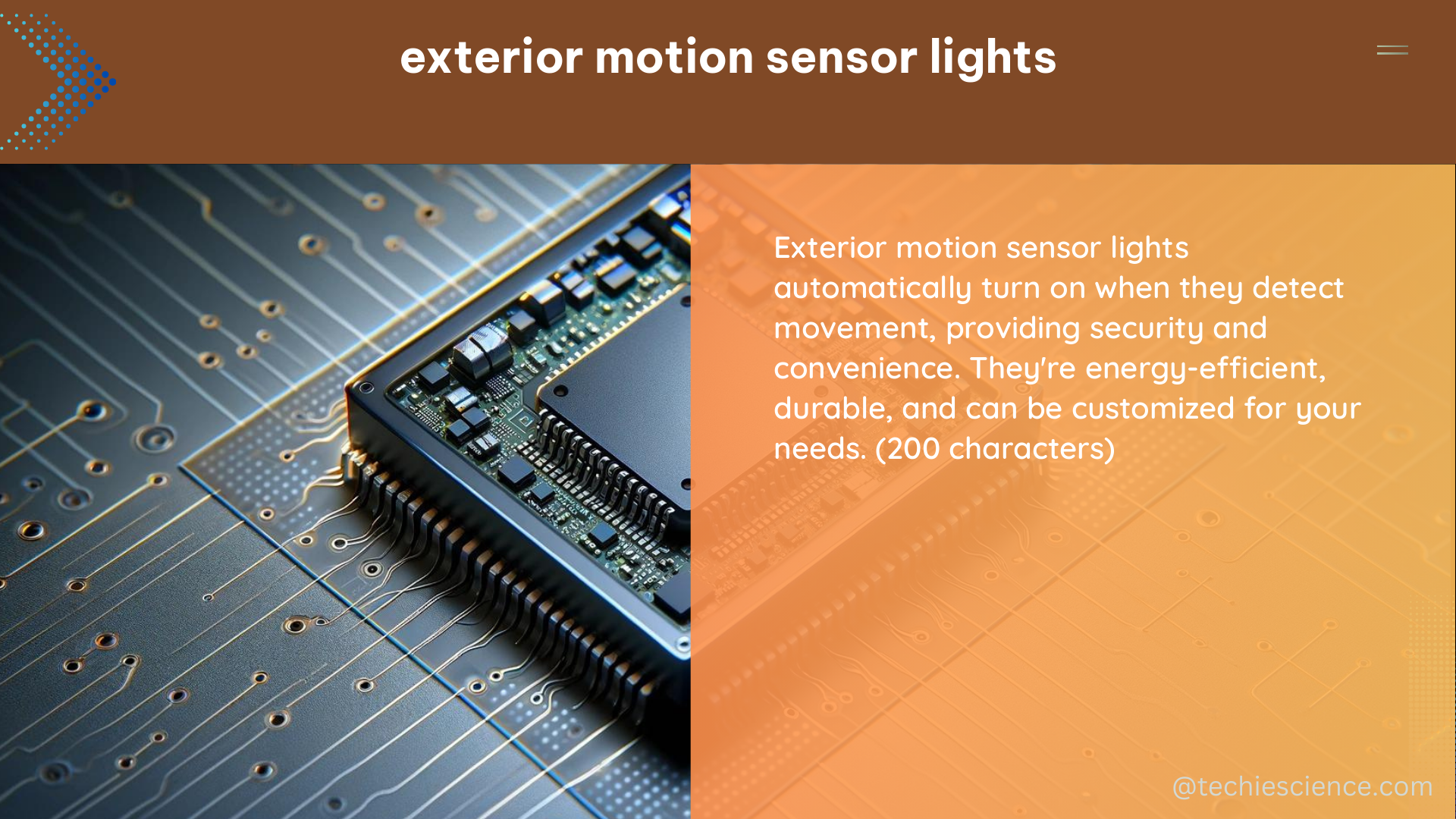Exterior motion sensor lights are a crucial component of home security and energy efficiency, designed to detect motion within a specific range and automatically activate, providing illumination for a set duration. This comprehensive guide delves into the technical specifications, customization options, and installation considerations for these versatile lighting solutions.
Technical Specifications of Exterior Motion Sensor Lights
Detection Range
The detection range of exterior motion sensor lights varies depending on the model and brand. For instance, the Home Zone Security MK-SC0108 has a detection range of up to 12 meters, while the Aooshine Motion Sensor Light can cover an area of up to 30 feet (9.1 meters) in diameter. The Philips Hue Outdoor Sensor, on the other hand, has a detection range of up to 39 feet (11.9 meters).
Lux Level
Lux level is a critical specification that determines the sensitivity of the sensor to light. A lower lux level indicates higher sensitivity, meaning the sensor can detect motion even in low-light conditions. Conversely, a higher lux level means the sensor requires more light to activate. The Aooshine Motion Sensor Light, for example, has an adjustable lux level range of 2-2000 lux, while the Philips Hue Outdoor Sensor operates within a lux range of 1-100,000 lux.
Illumination Duration
The duration of illumination is also adjustable, with most models offering a range of 1 to 20 minutes. The Aooshine Motion Sensor Light allows for a customizable illumination duration of 10 seconds to 10 minutes, while the Home Zone Security MK-SC0108 provides a range of 1 to 12 minutes.
Customization Options for Exterior Motion Sensor Lights

Sensitivity Adjustment
The sensitivity of the motion sensor can be adjusted to minimize false positives, which can occur due to factors such as wind, small animals, or passing vehicles. This feature is particularly useful in areas with high foot traffic or environmental factors that may trigger the sensor unnecessarily.
Illumination Duration Setting
The duration of illumination can be set based on the frequency of motion in the area. For example, in a high-traffic area, a shorter illumination duration may be preferred to conserve energy, while in a low-traffic area, a longer duration may be more suitable to provide adequate lighting.
Dusk-to-Dawn Functionality
Some exterior motion sensor light models offer dusk-to-dawn functionality, which keeps the lights on during nighttime hours and activates the motion sensor during the day. This feature can be beneficial for areas that require constant illumination, such as entryways or pathways.
Installation Considerations for Exterior Motion Sensor Lights
DIY Installation
Many exterior motion sensor light models come with detailed installation manuals that provide step-by-step instructions for DIY installation. The Home Zone Security MK-SC0108, for instance, includes a comprehensive manual that covers the entire installation process, from mounting the fixture to wiring the electrical connections.
Professional Installation
If you’re not comfortable with electrical work, it’s always best to hire a professional electrician to install your exterior motion sensor lights. Improper installation can lead to safety hazards or malfunctioning of the lights, so it’s crucial to ensure the job is done correctly.
Conclusion
Exterior motion sensor lights are a versatile and essential component of home security and energy efficiency. With adjustable detection ranges, lux levels, and illumination durations, these lights can be customized to suit the specific needs of your property. Whether you opt for a DIY installation or hire a professional, exterior motion sensor lights can provide reliable illumination and enhanced security for your home.
References:
- How to solve the dilemma of motion activated lights : r/homeassistant
- Motion Sensor Use for Physical Activity Data – NCBI
- Outdoor Motion Sensor Lights Market Size, Navigating Growth …
- Light Sensors: Units, Uses, and How They Work – enDAQ Blog
- How to bypass motion detector on outdoor flood light – DIY Stack Exchange

The lambdageeks.com Core SME Team is a group of experienced subject matter experts from diverse scientific and technical fields including Physics, Chemistry, Technology,Electronics & Electrical Engineering, Automotive, Mechanical Engineering. Our team collaborates to create high-quality, well-researched articles on a wide range of science and technology topics for the lambdageeks.com website.
All Our Senior SME are having more than 7 Years of experience in the respective fields . They are either Working Industry Professionals or assocaited With different Universities. Refer Our Authors Page to get to know About our Core SMEs.